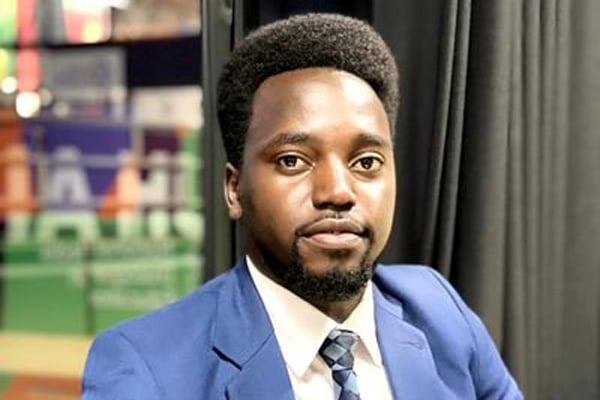Prime
Kiggundu: Veteran behind the State House lens rests

James Kiggundu was one of the longest serving State House photographers. PHOTO/COURTESY
What you need to know:
- Kiggundu’s extensive career spanned six administrations within the State House Presidential Press Unit.
James Kiggundu, one of the longest serving State House photographers, passed away on Tuesday at his home in Kabowa in Rubaga, Kampala, due to kidney failure. He was 70 years old.
Kiggundu’s extensive career spanned six administrations within the State House Presidential Press Unit (PPU), working under Hope Kivengere, Mary Karooro Okurut, Onapito Ekomoloit, Joseph Tamale Mirundi, Linda Nabusayi, and Don Wanyama.
Among his most renowned photographs were those capturing the meeting between President Museveni and Pope John Paul II in the Vatican in June 2002. Additionally, he documented the first talks between President Museveni and President Paul Kagame at Mweya, Kasese, in August 1999, aimed at resolving Uganda-Rwanda tensions.
In the early 1980s, he joined the Terehe Sita movement and later the guerrilla war that brought President Museveni to power in 1986.
During the war, Kiggundu joined the information team, capturing crucial moments on camera and it is here that he deeply connected with President Museveni.
While in Luweero, Kiggundu faced perilous situations, with one incident recounted by his son Herbert Ssali, stating that Obote’s militants had violently attacked him, leaving him severely injured. This forced him to flee his home for more than a year as militants relentlessly pursued him.
Linda Nabusayi Wabombo, who briefly worked with Kiggundu, emphasised the lasting impact of this incident on him, noting that it left him scarred for life. Until his death, he remained highly esteemed among the original generals of the NRM.
Upon President Museveni’s assumption of power in 1986, Kiggundu resumed his private photography business in Kampala. He also joined the Ministry of Defence in the Information and Communications department until the early 1990s when he became a State House photographer under the Presidential Press Unit (PPU). The unit was then headed by Hope Kivengere as the President’s Press Secretary.
Kiggundu steadily climbed the ranks and became the official photographer in 1999. Alongside William Rujuta, he pioneered the Presidential Photo Library, contributing significantly to documenting events from the 1960s to the present. When he officially retired in 2014, he was head of the photo desk in PPU.
Diligent worker
Magaret Kiggundu defined her late husband as “a hard worker, a creative, and highly passionate man when it came to his job.” She added that he often loved finishing an assignment once and for all.”
Nelson Bwire, the State House online editor, spoke fondly of Kiggundu, describing him as “a master storyteller” whose “passion for his job was infectious.” Bwire, who joined State House after Kiggundu’s retirement, noted that the fallen photographer graciously volunteered in his retirement to help out at the photo desk, the office responsible for managing the President’s photos. He worked until the onset of Covid-19 pandemic. It was then that his health started deteriorating.
Ms Nabusayi, a senior presidential advisor on media, said in his works, Kiggundu captured so many memories of Uganda’s journey to peace and freedom.
Away from official duty, one of Kiggundu’s most celebrated photos, his son says, was taken at a family getaway, a black and white image of his wife, Magaret, watching with adoration their children many years ago.
In his neighbourhood, Kabowa, according to resident Christine Desire, Kiggundu was a household name. She said as children, they were always happy to cross paths with him because he never missed capturing their photos.
“Good poses for photos sometimes required a soda to be visible, and he never hesitated to buy soda for the children so they could smile widely in the shots,” she said, noting that he, however, disappeared over the years, and their parents intimated to them that he had started working for the President.
Strong beliefs
At State House, Bwire reveals that Kiggundu regaled them with tales of his photojournalism adventures, igniting a spark of wanderlust and a desire to follow in his footsteps.
Bwire also spoke fondly of Kiggundu’s faith and his active involvement in the Fathers’ Union. The deceased’s wife, with whom they walked down the isle in 2013, says his choice to take on holy marriage was a true reflection of a deeper connection he had with God.
Kiggundu spent nearly 50 years behind a camera, working closely with different people. He saw it all, from working within a photo film, primarily in black-and-white to the digital era.
Bashir Lukwago, who worked at Kiggundu’s studio in Kampala in the 1990s, says he disliked over-theoretical analysis. He defined photography as “an art of observation” or “a biography of a moment.” He suggested that artistry lies in “finding something interesting in an ordinary place.”
Bashir reminisces about a famous quote Kiggundu often used: “Photography, just like life, has little to do with the things you see and everything to do with the way you see them.”
When Fred Mubiru crossed paths with Kiggundu in the early 2000s, the latter was taking photography training with South Korean experts. Kiggundu, being known to the directors, would make prompt visits to guide them with the A to Z of photography.
He notes that Kiggundu had vast knowledge of the industry, equipment handling and maintenance, and client satisfaction from the first point of contact to the point of product delivery. He would say, “Young men, this small equipment, when respected and handled well, will take you places.”
Years later, with continued guidance from Kiggundu, Mubiru was among the officially selected photographers for Chogm in 2007, where he captured, among many photographs, one of the late Queen Elizabeth.
Long sickness
Ssali says his father first fell sick in 2017, experiencing mild pain within his leg joints. His persistent health issues prompted the family to seek further medical examination, which revealed that he had a hernia. Before he could fully address the hernia with medication, Kiggundu was diagnosed with prostate cancer in 2020 and kidney failure in March 2023.
Although Kiggundu responded well to prostate cancer chemotherapy, the kidney failure continued to take a deeper toll on his health. He underwent dialysis twice a week at Kiruddu hospital for four months. The recurring dialysis, coupled with his other health complications, took a toll on his life and the family’s finances. This situation led the family to seek financial assistance from the State House.
Ssali says State House responded by instructing them to transfer Kiggundu to Mulago hospital in November, covering the expenses. Unfortunately, even with the financial support from the State House, Mulago hospital lacked the necessary medicines to treat Kiggundu. This meant the family had to purchase the required medicines privately from elsewhere.
The financial burden increased for the family during their time at Mulago, prompting them to follow advice and bring Kiggundu home on the Thursday of last week. At home, Kiggundu relied on the mercy of God until he passed away on Tuesday morning this past week at his residence in Kabowa.
He was laid to rest on Thursday at his family’s ancestral grounds in Kanzira A Village, Kigalama in Kasanda District. Surviving him are his wife, 17 children and grandchildren.
About Kiggundu
Born on October 22, 1953, to Sam Mugerwa and Alice Nannono, Kiggundu was the first of their two children. After completing his primary education at Nakisanja Primary School, he joined Kitante High School for Junior One and Two. He later moved to Nairobi, Kenya, where he studied Photography and Videography at Kabeta School of Photography.
Subsequently, while working at State House, Kiggundu earned a diploma in Journalism from Makerere School of Commercial Studies and Media Training.
Following his studies in Kenya, he briefly worked in Nairobi before returning to Kampala to establish his photography business, City Studio, on Ben Kiwanuka Street in the late 1970s.





